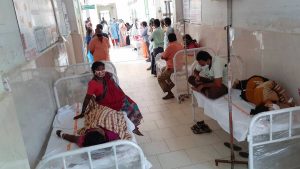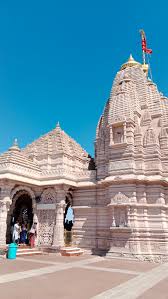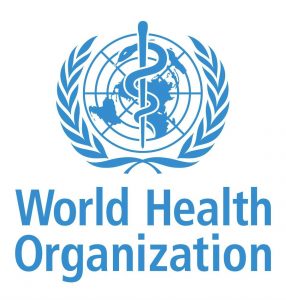Today’s Current Affairs: 9th September 2025 for UPSC IAS exams, State PSC exams, SSC CGL, State SSC, RRB, Railways, Banking Exam & IBPS, etc
Table of Contents
Notifiable Disease : New Recommendation

An eminent New York-based oncologist welcomes a recent parliamentary committee recommendation to declare cancer a notifiable disease in India.
- A notifiable disease is any disease that is required by law to be reported to government authorities.
- Effective notification allows the authorities to monitor the disease and provides early warning of possible outbreaks.
- A notifiable disease is one for which regular and timely information regarding individual cases is considered necessary for the prevention and control of the disease.
- Criteria for Declaring a Disease as Notifiable may be:
- It is of interest to national or international regulations or control programs.
- Its national/ State/District incidence.
- Its severity (potential for rapid mortality).
- Its communicability/Its potential to cause outbreaks.
- Diseases which are considered to be serious menaces to public health are included in the list of notifiable diseases.
- Medical practitioners and diagnostic labs are required to notify the local health department of cases of notified diseases.
- In India, the State government is responsible for determining which diseases must be reported to the medical officer in their area and to notify the diseases.
- The government and regional authorities maintain a list of notifiable diseases in India, which is subject to change as new diseases are added or existing ones are removed.
- Examples: Cholera, tuberculosis, AIDS, dengue, hepatitis, leprosy, meningitis, plague, and measles.
- WHO’s International Health Regulations (1969): Mandates countries to report diseases for global surveillance and advisory purposes.
Pavagadh Kalika Mata Temple:

Six persons were killed on Saturday after the cable wire of a ropeway meant for material transport at the Kalika Mata temple snapped, causing the cable car to crash to the ground in the Pavagadh area of Gujarat’s Panchmahal district.
- Pavagadh Kalika Mata Temple is a Hindu temple complex and pilgrim centre at the summit of Pavagadh Hill in Panchmahal District, Gujarat.
- The presiding deity is Maa Kali (Kalika Mata), a form of Goddess Durga/Shakti.
- It is one of the 51 Shakti Peethas in India.
- It lies at an elevation of 762 meters above sea level. It is located on a cliff surrounded by dense forest cover.
- The temple is believed to be over 1,000 years old, with its origins tracing back to the 10th–11th centuries. Mahakali’s idol was installed here in the 12th century.
- It saw patronage and renovations under the Solanki Rajput dynasty, who ruled large parts of Gujarat.
- During the reign of Sultan Mahmud Begada, Pavagadh and Champaner became key religious and cultural centers.
- Today, the temple is a part of the Champaner-Pavagadh Archaeological Park, which was declared a UNESCO World Heritage Site in 2004.
- Built with stone, the temple structure reflects medieval Hindu temple architecture with intricate carvings, domes, and an inner sanctum (garbhagriha).
- The sanctum houses the black stone idol of Mahakali—the upper part visible to devotees, while the lower part remains underground, symbolizing mystery and divine grounding.
- The temple has been refurbished in recent years, with improved ropeway connectivity and facilities while maintaining its sacred ambiance.
Rattle Hydroelectric Project:

Five persons were injured when a landslide struck the vital Rattle hydroelectric project in Kishtwar recently.
- It is a hydroelectric power plant under construction in Kishtwar District, Jammu and Kashmir.
- It is an 850 MW run-of-river scheme located on the Chenab River.
- The project is being developed by Ratle Hydroelectric Power Corporation (RHPCL), which was formed as a joint venture (JV) between Jammu & Kashmir State Power Development Corporation (JKSPDC) and India’s state-owned National Hydroelectric Power Corporation (NHPC).
- NHPC and JKSPDC hold 51% and 49% equity ownership in RHPCL, respectively.
- The project includes a 133-meter-tall and 194.8-meter-long concrete gravity dam, a diversion dam, and an underground powerhouse on the right bank of the river.
- The underground powerhouse measuring 168 m x 24.5 m x 49 m will house four 205 MW Francis turbine-generating units and a 30 MW auxiliary turbine-generating unit.
- The project is expected to generate 3,137 GWh of electricity.
Pakistan has frequently alleged that the project violates the Indus Waters Treaty of 1960.
Yedshi Ramling Ghat Wildlife Sanctuary:

A young male tiger recently travelled 450 km from Vidarbha to make his home in Yedshi Ramling Ghat Wildlife Sanctuary, a modest jungle in Maharashtra’s that had not seen a big cat settling in decades.
- Yedshi Ramling Ghat Wildlife Sanctuary is located in the Osmanabad District of Maharashtra.
- Established on May 23, 1997, the sanctuary spans approximately 22.38 sq.km.
- The sanctuary lies in the Balaghat mountain range of the Sahyadri hills.
- A significant attraction within the sanctuary is the ancient Ramling Temple dedicated to Lord Shiva.
- Nearby, there’s a waterfall and a cave associated with local legends involving figures from the Ramayana, such as Ravana and Jatayu.
- The sanctuary features South Deccan Plateau dry deciduous forests and thorny scrublands.
- Common tree species include teak (Tectona grandis), sandalwood (Santalum album), neem (Azadirachta indica), and various Acacia species.
- Shrubs like Lantana camara and Carissa carandas are also prevalent.
- Wildlife in the sanctuary includes leopards, sloth bears, blackbucks, jackals, wolves, foxes, monitor lizards, porcupines, barking deer, and hares.
Missile Technology Control Regime:

The U.S. President is expected to unilaterally reinterpret the Missile Technology Control Regime (MTCR) agreement it signed in 1987 to sell sophisticated “Reaper” style and other advanced military drones abroad, according to U.S. officials.
- Missile Technology Control Regime (MTCR) is an intergovernmental organization whose members implement voluntary export controls on missiles capable of delivering nuclear, chemical, or biological weapons, as well as related technology.
- It was founded in 1987 by Canada, France, Germany, Italy, Japan, the United Kingdom, and the United States to control the spread of nuclear-capable missiles and the technology used in their production.
- In 1993, the group broadened its focus to include chemical and biological weapons-capable missiles.
- There are currently 35 countries that are members (Partners) of the MTCR.
- India became the 35th member of the MTCR on 27 June 2016.
- Member states of the regime agree to impose export controls on missiles, defined as rocket systems and unmanned aerial vehicle systems (UAVs), as well as a wide variety of technical components and software related to missile production.
- The equipment, software and technology covered by the agreement are broken down into Category I and Category II items.
- Category I items are strictly controlled under the organization’s guidelines; these items are missiles capable of delivering a warhead weighing 500 kilograms or more to ranges exceeding 300 kilometers, as well as their major subsystems like engines and re-entry vehicles.
- Member countries have more discretion regarding the transfer of Category II items, which are considered less sensitive, such as propulsion and launch components, and missile systems with a range of at least 300 kilometers, no matter the payload.
- MTCR guidelines are an informal standard set by a selected group of countries rather than an international treaty adopted by its members.
- The agreement has no legally binding provisions or regime-wide compliance procedures.
- If disagreements occur, member states can consult bilaterally to clarify the issue, or bring their concerns up at the MTCR’s annual policy-level Plenary Meeting.
- While the agreement outlines no legal repercussions for breaking the adopted standards of the MTCR, the United States government has passed legislation allowing for the introduction of sanctions against any nations that export items restricted by the MTCR agreement.
- Joining the MTCR provides member countries with international legitimacy and signals support for the nonproliferation of missiles.
- Adoption of the treaty may also assist in legitimizing existing long-range ballistic missile capabilities in the eyes of other MTCR members by showcasing responsible handling of existing missile technology.
WHO Model Lists of Essential Medicines:

The World Health Organization (WHO) released updated editions of its Model Lists of Essential Medicines (EML), adding new treatments for various types of cancer, diabetes, and obesity associated with comorbidities
- WHO Model Lists of Essential Medicines acts like a register of minimum medicine needs for every health-care system.
- It is updated every two years by the Expert Committee on Selection and Use of Essential Medicines.
- The first country in the world to compose its EML was Tanzania in 1970.
- Then in 1975, the World Health Assembly requested WHO to assist member states in selecting and procuring essential medicines, assuring good quality at reasonable cost.
- Subsequently, the first WHO model list of essential medicines was published in the year 1977 which contained 186 medicines.
- WHO selects essential medicines based on public health relevance, evidence of benefits and harms, and with consideration of costs, affordability and other relevant factors.
- Globally, over 150 countries have national essential medicines lists based on the WHO Model List.
- As per the World Health Organisation (WHO), Essential Medicines are those that satisfy the priority health care needs of the population.
- The list is made with consideration to disease prevalence, efficacy, safety and comparative cost-effectiveness of the medicines.
- These medicines are intended to be available in adequate amounts, in appropriate dosage forms and strengths with assured quality.
International Earth Science Olympiad:

The Union Minister of State (Independent Charge) for Science & Technology felicitated the student winners comprising the Indian team at the 18th “International Earth Science Olympiad” (IESO-2025) held at Jining, China.
- The International Earth Science Olympiad (IESO), established in 2003 by the International Geoscience Education Organization (IGEO).
- It aims to generate awareness of earth sciences through teamwork, collaboration, exchanging ideas, and competition.
- It is an annual competition for secondary school students (Class IX–XII) worldwide.
- India’s Initiatives is to encourage the participation of Indian students (of grades 9 to 12) the Ministry of Earth Sciences (MoES) supports the Indian National Earth Science Olympiad (INESO) held in various schools across India.
- The INESO is a national-level prelude to the IESO, Facilitated annually by the Geological Society of India in collaboration with MoES and select educational bodies in the country.
- Topics for assessment: Geology, Meteorology, Oceanography, and Environmental sciences.
- Top-performing participants from INESO get to represent India at the IESO, which also receives support from the MoES.
- The MoES supports the INESO and IESO as part of the REACHOUT scheme under the PRITHVI (PRITHvi Vigyan) scheme.
Chief of the Naval Staff visited the National Maritime Heritage Complex (NMHC) at Lothal, Gujarat:
The Chief of the Naval Staff visited the National Maritime Heritage Complex (NMHC) at Lothal, Gujarat. National Maritime Heritage Complex is an ambitious cultural and tourism project in Lothal, Gujarat that aims to highlight India’s rich and diverse 4,500-year-old maritime heritage and establish the largest maritime heritage complex in the world. Key projects include a world-class Lighthouse Museum, coastal state pavilions, and a maritime-themed eco-resort. Development and Funding: Under India’s Sagarmala Programme, the Ministry of Ports, Shipping & Waterways (MoPSW) is developing the NMHC, with its Directorate General of Lighthouses and Lightships (DGLL) funding the world’s tallest Lighthouse Museum.
Stellar Parallax:
Astronomers have demonstrated a pioneering technique using stellar parallax to navigate spacecraft in deep space without relying on Earth-based beacons. s the earth orbits the sun, a star’s position relative to other stars might seem to shift. This is because every six months, the earth is on opposite sides of the sun, providing two different viewpoints. The New Horizons spacecraft observed Proxima Centauri (4.2 light-years away) and Wolf 359 (7.9 light-years away) from a distance of 7 billion km from Earth.
Operation Guddar:
An encounter broke out in the Guddar forest of Kulgam, J&K, under Operation Guddar, after terrorists opened fire on security forces during a search operation. A counter-terrorism operation launched by J&K Police, Army, and CRPF in Kulgam district. Named after the Guddar forest area where militants were suspected to be hiding.Aim is to neutralize active terrorists operating in South Kashmir, to secure forested terrain and villages used as militant hideouts.
Yoga and Sudarshan Kriya for prisoners:
The Chhattisgarh government has introduced Yoga and Sudarshan Kriya across all district jails as part of a prison reform initiative, aiming to rehabilitate inmates through mental peace, self-discipline, and positivity.Yoga: An ancient Indian practice combining physical postures (asanas), breathing exercises (pranayama), and meditation for holistic well-being. A rhythmic breathing technique developed by Sri Sri Ravi Shankar (Art of Living Foundation), designed to harmonize body, mind, and emotions. Implemented under the “Prison Course” with support from the Art of Living Foundation.
The Apatanis Tribe:
The Apatani women of Ziro Valley, Arunachal Pradesh, represent the last generation to wear the tribe’s traditional facial tattoos and wooden nose plugs, a practice banned in the 1970s but still proudly carried by elderly women. The Apatani (Tanw, Apa Tani, or Apa) are an indigenous tribal group of Arunachal Pradesh. Known for their distinct cultural identity, ecological knowledge, and traditional practices.Primarily inhabit the Ziro Valley, located in the Lower Subansiri district of Arunachal Pradesh. Valley is bowl-shaped, scenic, and lies in the eastern Himalayan ranges.It was introduced as a tribal protection strategy during times when raids and abductions by neighbouring tribes were common. Over time, it evolved into a marker of identity and cultural pride, signifying a woman’s belonging to the Apatani community.
Monkeypox is no longer a Public Health Emergency:
The World Health Organization (WHO) has declared that mpox (monkeypox) is no longer a Public Health Emergency of International Concern (PHEIC) due to sustained decline in global cases and deaths.Mpox (Monkeypox) is a viral zoonotic disease caused by the monkeypox virus (MPXV). Belongs to the Orthopoxvirus genus of the Poxviridae family, which also includes variola (smallpox), cowpox, and vaccinia viruses.Likely spread from infected animals (rodents, primates) to humans through bites, scratches, hunting, or consumption. Maintained in endemic regions of Central and West Africa, with periodic outbreaks elsewhere.
Nilgiri Tea:
Nilgiris tea growers are facing a persistent cost price crisis due to low prices for green tea leaves (GTL), overproduction, and weak auction mechanisms, threatening the sustainability of small growers in the region.Nilgiri tea is a variety of Camellia sinensis var. sinensis, grown in the Nilgiris district of Tamil Nadu. Known for its brisk, fragrant, and full-bodied liquor, it is often blended into iced teas, masala chai, and global tea brands.Cultivated mainly in the Nilgiris district, Tamil Nadu, with smaller areas in Kerala and Karnataka. Recognised as a Geographical Indication (GI) product since 2008.
As part of the 50th Independence Day celebrations of Papua New Guinea, the Indian Navy Band participated in the grand Military Tattoo at Port Moresby:
Papua New Guinea is an island nation in Oceania located in southwestern Pacific Ocean. Its neighbors are: Indonesia to the west; Australia to the south and Solomon Islands to the south-east. It is bounded by the Pacific Ocean, Bismarck Sea, Solomon Sea, Coral Sea, Torres Strait and Gulf of Papua.It has several volcanoes and is prone to earthquakes and tsunamis.The country is a constitutional monarchy and a member of the Commonwealth. The British monarch, represented by a governor-general, is head of state, and the Prime Minister is head of government. Capital City: Port Moresby.
Alia Bhatt Becomes Global Brand Ambassador for Levi’s:
Levi’s has announced Bollywood star Alia Bhatt as its new global brand ambassador. This collaboration is not just about celebrity endorsement but marks a strategic shift in denim fashion, reflecting how younger generations want to express themselves through style-led and comfort-first fits.The partnership comes at a crucial time when women’s fashion is undergoing a notable transformation. Relaxed fits, wide-leg jeans, and looser silhouettes are emerging as staples in everyday wardrobes, moving away from traditional skinny or tight-fit designs.
Bhupender Gupta Appointed CMD of NHPC Amid Green Push:
Bhupender Gupta has been appointed the Chairman and Managing Director (CMD) of NHPC Limited, one of India’s top hydropower PSUs. Approved by the Appointments Committee of the Cabinet (ACC), his appointment signifies a strategic step toward bolstering NHPC’s expansion into clean and renewable energy. This change in leadership comes at a time when India is accelerating its transition towards sustainable power generation, making this development especially important for current affairs aspirants.
100th Birth Anniversary Festivities of Bharat Ratna Awardee, Bhupen Hazarika:
India has begun celebrating the 100th birth anniversary of Bharat Ratna awardee Bhupen Hazarika, the legendary singer, poet, and composer from Assam. Known for his powerful voice and timeless songs on humanity, equality, and cultural unity, Hazarika’s work continues to inspire generations.Bhupen Hazarika was born on September 8, 1926, in Assam. He became one of India’s most iconic cultural figures through his soulful songs, powerful lyrics, and socially relevant compositions. He sang about the lives of the common people, the struggles of the oppressed, and the beauty of Assam and the Northeast.
India clinches its first-ever gold in men’s compound team event at the 2025 Archery World Championships:
India scripted archery history on September 7, 2025, by clinching its first-ever gold medal in the men’s compound team event at the World Archery Championships held in Gwangju, South Korea. In a nail-biting final, the Indian trio of Rishabh Yadav, Aman Saini, and Prathamesh Fuge edged out France 235–233, marking a landmark achievement for Indian compound archery. This gold medal win redeems an otherwise mixed campaign for India, particularly after the women’s team bowed out early, ending their eight-year medal streak.
India Unveils $125 Billion Plan for High-Speed Road Network:
India will invest ₹11 lakh crore ($125 billion) to expand its high-speed road network fivefold by 2033. The project, spearheaded by the Ministry for Road Transport and Highways, aims to build 17,000 km of access-controlled expressways, slashing logistics costs and enhancing economic connectivity across the country. This major push aligns India with global infrastructure leaders like China and the United States, while signaling a strong focus on modern mobility, investor engagement, and economic efficiency.
PNB Signs ₹21,000 Cr MoU with Rajasthan for Growth Push:
Punjab National Bank (PNB) has signed a ₹21,000 crore Memorandum of Understanding (MoU) with the Rajasthan government under the Rising Rajasthan initiative. The partnership aims to accelerate socio-economic growth, focusing on MSMEs, women entrepreneurs, and digital financial inclusion across the state. The MoU was signed in Jaipur in the presence of Rajasthan Chief Minister Bhajan Lal Sharma and PNB MD & CEO Ashok Chandra, who emphasized the bank’s commitment to supporting grassroots economic transformation.
Russia Unveils Colon Cancer Vaccine:
Russia’s Federal Medical Biological Agency (FMBA) has announced that its vaccine for colon cancer is now ready for use, following successful completion of preclinical trials. This development, unveiled at the 10th Eastern Economic Forum (EEF) in Vladivostok, marks a major step in cancer immunotherapy, especially for colorectal cancer, one of the most prevalent forms of cancer worldwide.




